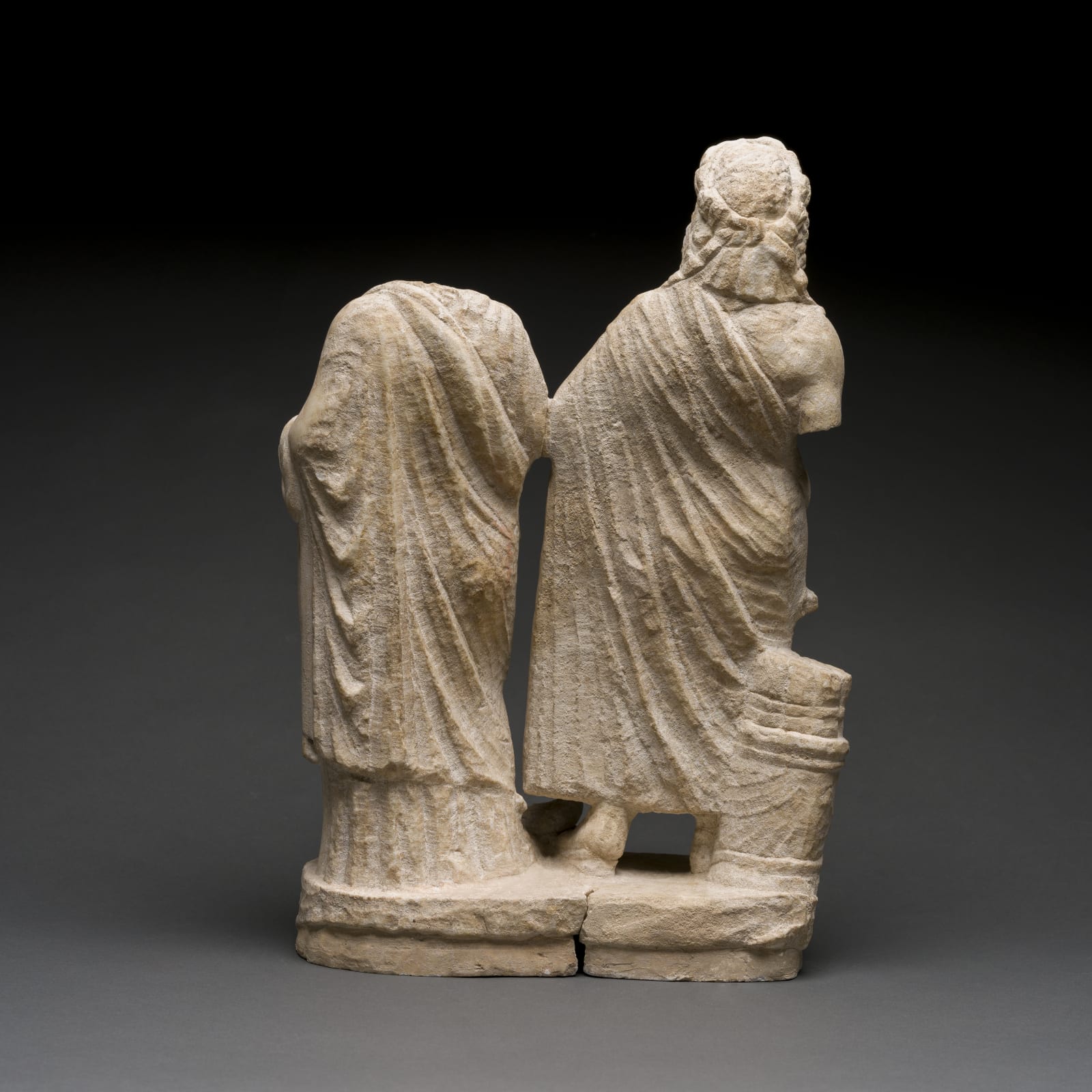Roman Marble Sculpture of Asklepios and Hygeia, 2nd Century CE - 3rd Century CE
Marble
height 42.5 cm
height 16 3/4 in
height 16 3/4 in
X.0163
Aesculapius, known to the Greeks as Asklepios, was the Classical god of medicine. Sanctuaries dedicated to his powers dotted the Mediterranean, perhaps the most famous being the Asklepieion at Epidaurus,...
Aesculapius, known to the Greeks as Asklepios, was the Classical god of medicine. Sanctuaries dedicated to his powers dotted the Mediterranean, perhaps the most famous being the Asklepieion at Epidaurus, which was the most celebrated healing center in the ancient world. According to mythology, he learned the art of medicine as a child from the wise centaur Chiron, whom also raised the young god. He was the father of two sons and a daughter, Hygeia, the goddess of good health, with whom he is represented here, by his wife Epione. Hygeia was generally worshipped in conjunction with her father, as this sculpture attests to.
In this magnificent marble sculpture, Aesculapius is depicted in his traditional manner, with a thick beard and mustache and a wreath crowning his head. His identity is confirmed by the presence of a coiled snake next to his left foot. The serpent was both the source of many of his remedies as well as a symbol of the god himself. A himation has been draped over his left shoulder and it covers his body from the waist down, carved with deep grooves that emphasize the folds of the fabric. By his right foot, a container filled with rolled-up scrolls serves iconographically as a reference to his knowledge and functionally as a support.
His daughter, Hygeia, is shown standing to his left, wearing a voluminous himation draped over a lighter undergarment that has been belted below her breasts and falls over her feet in vertical folds. In her right hand, she holds another snake wound around her arm that would have presumably been drinking from a phiale she would have carried in her now missing left hand. Hygeia is commonly depicted with a snake for the same reasons mentioned in reference to her father. Did this sculpture once decorate a sanctuary dedicated to these gods? We can imagine sick and ill lining up in front of this sculpture to offer libations and prayers to Aesculapius and Hygeia, hoping to garner the good favor and healing powers of this pair.
In this magnificent marble sculpture, Aesculapius is depicted in his traditional manner, with a thick beard and mustache and a wreath crowning his head. His identity is confirmed by the presence of a coiled snake next to his left foot. The serpent was both the source of many of his remedies as well as a symbol of the god himself. A himation has been draped over his left shoulder and it covers his body from the waist down, carved with deep grooves that emphasize the folds of the fabric. By his right foot, a container filled with rolled-up scrolls serves iconographically as a reference to his knowledge and functionally as a support.
His daughter, Hygeia, is shown standing to his left, wearing a voluminous himation draped over a lighter undergarment that has been belted below her breasts and falls over her feet in vertical folds. In her right hand, she holds another snake wound around her arm that would have presumably been drinking from a phiale she would have carried in her now missing left hand. Hygeia is commonly depicted with a snake for the same reasons mentioned in reference to her father. Did this sculpture once decorate a sanctuary dedicated to these gods? We can imagine sick and ill lining up in front of this sculpture to offer libations and prayers to Aesculapius and Hygeia, hoping to garner the good favor and healing powers of this pair.



